FYLS-17650 Halogen Acid Gas Release Tester | IEC 60754 Compliant
Understanding Halogen Acid Gas Release Determination: Industry Trends and Compliance
In an era of increasing environmental consciousness and stringent safety regulations, the precise determination of halogen acid gas release from materials has become a critical aspect of product development and quality control. Halogenated compounds, when combusted, can release corrosive and toxic acid gases such as hydrogen chloride (HCl), hydrogen bromide (HBr), hydrogen fluoride (HF), and hydrogen iodide (HI). These gases pose significant risks to human health, infrastructure (corrosion of electronic equipment, cables), and the environment (acid rain). Industries ranging from wire and cable manufacturing to electronics, construction, and automotive are under immense pressure to ensure their products comply with international standards regarding the release of these harmful substances.
The global market for materials testing equipment, particularly for fire safety and environmental compliance, is experiencing robust growth. Driven by directives like the EU's Construction Products Regulation (CPR), which mandates fire performance testing for construction materials, and evolving IEC, UL, and ASTM standards for electrical and electronic products, the demand for precise and reliable testing devices is accelerating. For instance, the global wire and cable market is projected to reach over $250 billion by 2027, with a growing emphasis on low smoke zero halogen (LSZH) materials. This shift directly fuels the need for advanced testing equipment like the FYLS-17650 Halogen Acid Gas Release Determination Device, which provides the critical data required for compliance.
The trend towards miniaturization in electronics and increasing complexity in industrial installations means that even small amounts of corrosive gases can have disproportionately large impacts. Furthermore, sustainability initiatives are prompting manufacturers to seek out materials with reduced environmental footprints, including those that release fewer harmful combustion byproducts. This proactive approach to material safety and environmental stewardship underscores the indispensable role of highly accurate analytical instruments in modern manufacturing and research. The FYLS-17650 Halogen Acid Gas Release Determination Device stands as a testament to this evolving industrial requirement, offering a precise solution for complex material analysis.
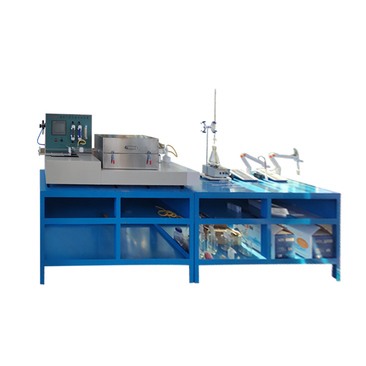
Figure 1: Internal view of the combustion chamber in a modern gas release determination device.
Technical Specifications and Core Parameters of the FYLS-17650 Halogen Acid Gas Release Determination Device
The FYLS-17650 Halogen Acid Gas Release Determination Device is engineered to provide precise and reliable measurements of halogen acid gas release from materials under controlled combustion conditions. It adheres strictly to international standards such as IEC 60754-1 & IEC 60754-2, EN 50267-2-1 & EN 50267-2-2, and ASTM D5425, ensuring global compliance and comparability of results. Understanding its core technical parameters is crucial for appreciating its capabilities and suitability for various testing requirements.
Key Technical Parameters of FYLS-17650 Halogen Acid Gas Release Determination Device:
| Parameter | Specification | Explanation / Importance |
|---|---|---|
| Compliance Standards | IEC 60754-1, IEC 60754-2, EN 50267-2-1, EN 50267-2-2, ASTM D5425 | Ensures global acceptance of test results and adherence to industry best practices for low smoke halogen-free materials. |
| Working Temperature Range | Ambient to 1000°C (±10°C) | Accurate temperature control is vital for simulating real fire conditions and ensuring complete combustion of samples. |
| Temperature Control Accuracy | ±2°C (within controlled range) | High precision temperature control minimizes variables and enhances repeatability of tests. |
| Combustion Tube Material | Quartz Glass (high purity) | Chosen for its high temperature resistance, chemical inertness, and transparency, allowing visual observation (if required) and preventing interference with gas analysis. |
| Air Flow Rate | 10 to 100 L/hr (adjustable, ±1 L/hr) | Controlled airflow is critical for supplying sufficient oxygen for combustion and for transporting the generated gases to the absorption solution. Achieved via precision mass flow controllers. |
| Gas Absorption System | Two absorption bottles in series | Ensures maximum capture of halogen acid gases using deionized water. The two-stage system provides redundancy and improves absorption efficiency. |
| Conductivity Measurement Range | 0.01 µS/cm to 2000 µS/cm | Wide range to detect even trace amounts of acid gases. Conductivity change in the absorption solution directly correlates to acid gas concentration. |
| Conductivity Measurement Accuracy | ±0.5% F.S. (Full Scale) | High accuracy ensures reliable and precise quantification of the halogen acid gas release. |
| pH Measurement Range | 0 to 14 pH | Monitors the acidity of the absorption solution. Often used in conjunction with conductivity or for specific standards. |
| pH Measurement Accuracy | ±0.05 pH | Precise pH monitoring contributes to the overall accuracy of the acid gas determination. |
| Sample Size | Max. 1000 mg (adjustable per standard) | Accommodates various material types and testing requirements. Standard IEC 60754-2 specifies a 1g sample. |
| Data Acquisition System | Integrated PC software with real-time display and data logging | Enables continuous monitoring, automated calculation, and comprehensive data archiving for traceability and analysis. |
| Power Supply | AC 220V ±10%, 50/60 Hz, 3.5 kW | Standard industrial power requirement. Efficient energy consumption for continuous operation. |
| Dimensions (Approx.) | 700mm (W) x 500mm (D) x 1200mm (H) | Compact design for laboratory environments. |
| Weight (Approx.) | ~80 kg | Manageable for laboratory installation. |
This comprehensive set of parameters ensures that the FYLS-17650 Halogen Acid Gas Release Determination Device is not only compliant with the most rigorous international standards but also delivers the precision and repeatability demanded by modern industrial quality control and research facilities. Its automated data acquisition system, in particular, streamlines the testing process and reduces potential human error, making it a highly efficient and trustworthy solution.

Figure 2: User interface and control panel for the FYLS-17650, highlighting ease of operation.
Application Scenarios: Where the FYLS-17650 Halogen Acid Gas Release Determination Device Makes an Impact
The versatility and precision of the FYLS-17650 Halogen Acid Gas Release Determination Device make it an indispensable tool across a wide array of industries where material safety and environmental compliance are paramount. Its ability to accurately quantify halogen acid gas release helps manufacturers meet stringent regulatory requirements and demonstrate product safety.
Key Application Sectors:
- Wire and Cable Manufacturing: This is arguably the primary application. With the increasing adoption of Low Smoke Zero Halogen (LSZH) cables in construction, railway, marine, and data center applications, manufacturers must verify that their cables do not release corrosive or toxic gases when exposed to fire. The FYLS-17650 Halogen Acid Gas Release Determination Device is critical for testing cable sheathing, insulation, and filling materials to IEC 60754 series standards, ensuring compliance for public safety and infrastructure protection.
- Electronics and Electrical Appliances: Printed circuit boards (PCBs), electronic components, and appliance casings often contain halogenated flame retardants. As these products age or are exposed to high temperatures, they can degrade and release harmful gases. Testing with the FYLS-17650 Halogen Acid Gas Release Determination Device helps manufacturers verify the environmental compatibility and safety of their electronic products, especially in situations involving thermal stress or potential fire.
- Construction and Building Materials: From insulation foams and pipes to sealants and decorative panels, many building materials incorporate halogenated compounds. Fire safety regulations, like those under the EU's CPR, demand assessment of these materials' reaction to fire, including corrosive gas release. The device plays a crucial role in ensuring that materials used in buildings do not contribute to dangerous atmospheres during a fire, protecting occupants and preventing damage to vital building systems.
- Automotive Industry: Modern vehicles contain vast amounts of plastic and rubber components. In the event of an electrical fire or collision, these materials can combust. The automotive industry is increasingly focused on reducing hazardous substances and improving passenger safety. The FYLS-17650 Halogen Acid Gas Release Determination Device helps test interior components, wiring harnesses, and other polymeric parts to meet automotive safety standards.
- Aerospace and Defense: In highly sensitive environments like aircraft and spacecraft, material fire performance and toxic gas release are critical for passenger and crew safety. Materials used in cabins, wiring, and structural components undergo rigorous testing, making devices like the FYLS-17650 Halogen Acid Gas Release Determination Device essential for material selection and certification.
- Research and Development Laboratories: Universities, independent testing labs, and material science research centers utilize this device for developing new halogen-free materials, optimizing existing formulations, and conducting fundamental research on polymer degradation and combustion byproducts.
In each of these scenarios, the FYLS-17650 Halogen Acid Gas Release Determination Device provides the precise data needed to make informed decisions about material selection, product design, and regulatory compliance. Its robust design and adherence to international standards make it a reliable partner in ensuring safer products and environments.
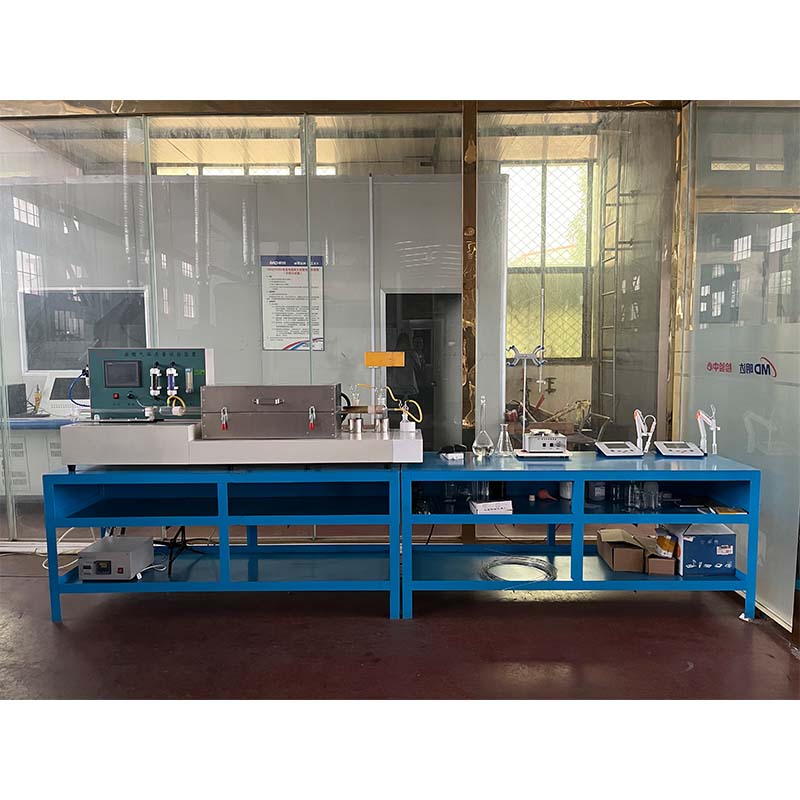
Figure 3: Typical laboratory setup of the FYLS-17650, showing its compact footprint.
Technical Advantages of the FYLS-17650 Halogen Acid Gas Release Determination Device
The FYLS-17650 Halogen Acid Gas Release Determination Device embodies several distinct technical advantages that set it apart in the field of material combustion testing, offering superior performance, reliability, and user experience.
Core Technical Superiorities:
- Exceptional Precision and Accuracy:
The device features advanced sensor technology for both conductivity and pH measurement, offering an impressive conductivity accuracy of ±0.5% F.S. and pH accuracy of ±0.05 pH. This precision is critical for detecting minute quantities of acid gases, ensuring that even materials with very low halogen content are accurately assessed. The furnace temperature control, maintained at ±2°C up to 1000°C, guarantees consistent combustion conditions, which directly impacts the reproducibility and reliability of the test results.
- Fully Automated Testing Process:
From sample combustion to gas absorption and data analysis, the FYLS-17650 Halogen Acid Gas Release Determination Device integrates a high degree of automation. The sophisticated software system controls the furnace temperature ramp, airflow rate via digital mass flow controllers, and automatically logs real-time conductivity and pH data. This automation minimizes operator intervention, significantly reduces the potential for human error, and improves laboratory efficiency, allowing technicians to focus on data interpretation rather than manual operation.
- Robust Construction and Material Durability:
The device is built with high-quality components designed for longevity and performance in demanding laboratory environments. The combustion tube is made from high-purity quartz glass, which offers exceptional resistance to high temperatures (up to 1200°C short-term) and chemical corrosion from the combustion products. The internal components exposed to corrosive gases are often constructed from corrosion-resistant materials such as Hastelloy or specific grades of stainless steel (e.g., 316L) to ensure long-term integrity and minimal maintenance. This robust material selection extends the device's lifespan and maintains measurement accuracy over years of intensive use.
- Comprehensive Data Management and Reporting:
Equipped with a powerful data acquisition and analysis software, the FYLS-17650 Halogen Acid Gas Release Determination Device provides real-time graphical displays of conductivity and pH changes during the test. Post-test, it automatically calculates the halogen acid gas release (expressed as HCl equivalents) and generates detailed test reports compliant with relevant standards. This feature is invaluable for traceability, auditing, and presenting clear evidence of product compliance to regulatory bodies and clients. Data can be easily exported for further analysis or integration into laboratory information management systems (LIMS).
- User-Friendly Interface and Safety Features:
Despite its technical sophistication, the device boasts an intuitive interface, often managed via a touch-screen display or dedicated PC software. This makes operation straightforward, even for new users, reducing the learning curve. Safety features, such as automatic shut-off mechanisms for over-temperature conditions, sample door interlocks, and exhaust ventilation indicators, are integrated to protect both the operator and the equipment, ensuring a safe testing environment in accordance with laboratory safety protocols (e.g., ISO/IEC 17025 requirements for competent testing facilities).
- Compliance with Multiple International Standards:
One of the most significant advantages is its design to strictly adhere to multiple international standards, including IEC 60754-1 & IEC 60754-2, EN 50267-2-1 & EN 50267-2-2, and ASTM D5425. This multi-standard compliance makes it a versatile tool for manufacturers operating in global markets, eliminating the need for multiple, specialized devices for different regions or customer requirements. This broad compliance enhances the device's authority and trustworthiness as a testing solution.
These technical advantages collectively position the FYLS-17650 Halogen Acid Gas Release Determination Device as a leading solution for critical halogen acid gas release determination, offering unparalleled performance, reliability, and ease of use for diverse industrial and research applications.
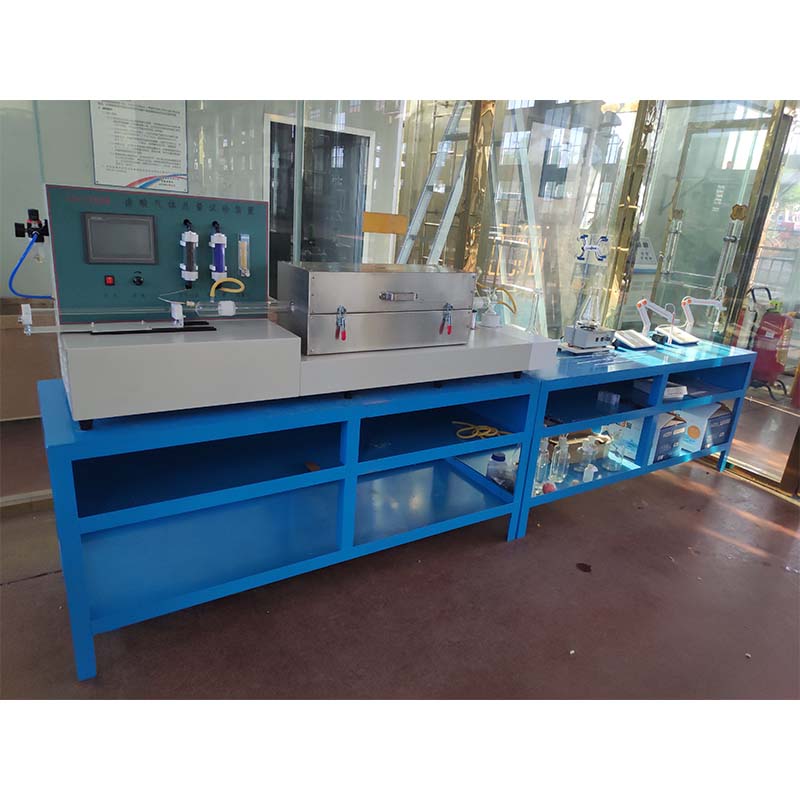
Figure 4: Detailed view of key components, illustrating precision engineering.
Manufacturing Process of the FYLS-17650 Halogen Acid Gas Release Determination Device
The manufacturing of a high-precision analytical instrument like the FYLS-17650 Halogen Acid Gas Release Determination Device involves a meticulous multi-stage process, integrating advanced engineering with stringent quality control. This ensures each unit meets the exacting standards required for accurate and repeatable scientific measurements, guaranteeing a long usage life and robust performance in challenging industrial environments such as petrochemical, metallurgy, and water treatment research, where materials must withstand corrosive conditions. The device's design also contributes to energy efficiency by precisely controlling the heating and gas flow, optimizing resource consumption during tests.
Process Flow Diagram (Conceptual)
Initial design based on IEC/EN/ASTM standards and market needs. Focus on thermal dynamics, gas flow, sensor integration, and user interface. CAD modeling and simulation play a crucial role in optimizing component layout and performance.
Careful selection of materials. For instance, the combustion furnace core components often utilize high-purity ceramic fiber insulation and specialized heating elements (e.g., Kanthal or silicon carbide) capable of reaching 1000°C reliably. The combustion tube is high-grade quartz glass due to its thermal shock resistance and chemical inertness. Fluid path components (pipes, fittings) are typically constructed from corrosion-resistant 316L stainless steel or PTFE/PFA for their resilience to acid gases and high temperatures, ensuring minimal sample contamination and maximum lifespan.
Critical components are manufactured using advanced techniques:
- CNC Machining: Metal enclosures, sensor housings, and precise mechanical parts are produced using Computer Numerical Control (CNC) machining for high dimensional accuracy and repeatability. This ensures perfect fit and seal integrity.
- Glass Blowing/Forming: The quartz combustion tube and absorption bottles are custom-formed through specialized glass-blowing techniques to meet specific dimensions and thermal properties.
- Electronic Board Assembly: PCB (Printed Circuit Board) assembly involves automated surface-mount technology (SMT) for consistent quality of the control electronics, including temperature controllers, sensor interfaces, and communication modules.
Individual modules (e.g., furnace unit, gas flow control system, liquid absorption unit, electrical control panel) are assembled and rigorously tested independently before final integration. This modular approach streamlines assembly and facilitates quality checks at each stage.
All sub-assemblies are integrated into the main chassis. Electrical wiring is meticulously routed and secured, adhering to safety standards (e.g., UL 61010-1 for laboratory equipment). Plumbing for the gas and liquid paths is carefully connected to prevent leaks and ensure smooth flow.
Each FYLS-17650 Halogen Acid Gas Release Determination Device undergoes extensive calibration in an ISO/IEC 17025 accredited laboratory environment. Temperature sensors are calibrated against traceable standards (e.g., NIST). Gas flow rates are verified using calibrated flow meters. Conductivity and pH sensors are calibrated using certified reference solutions. Functional tests simulate various operating conditions to confirm all systems (heating, gas flow, data acquisition, safety interlocks) work as intended.
A final comprehensive quality assurance check is performed, covering mechanical integrity, electrical safety, software functionality, and performance validation using reference materials. This ensures the device adheres to all design specifications and international standards like ISO 9001 for quality management systems.
The device is carefully packed in custom-designed, protective packaging to prevent damage during transit to the customer's site.
This rigorous manufacturing and quality control process ensures that the FYLS-17650 Halogen Acid Gas Release Determination Device delivers unparalleled accuracy, reliability, and a long service life, typically exceeding 10 years with proper maintenance. Its robust design and adherence to manufacturing standards (e.g., CE, RoHS compliance for electronic components) make it a trusted instrument in critical applications. The strategic material choice for corrosion resistance, coupled with precision manufacturing, allows the device to operate effectively even when dealing with highly corrosive combustion byproducts, an undeniable advantage in scenarios demanding integrity and consistency.
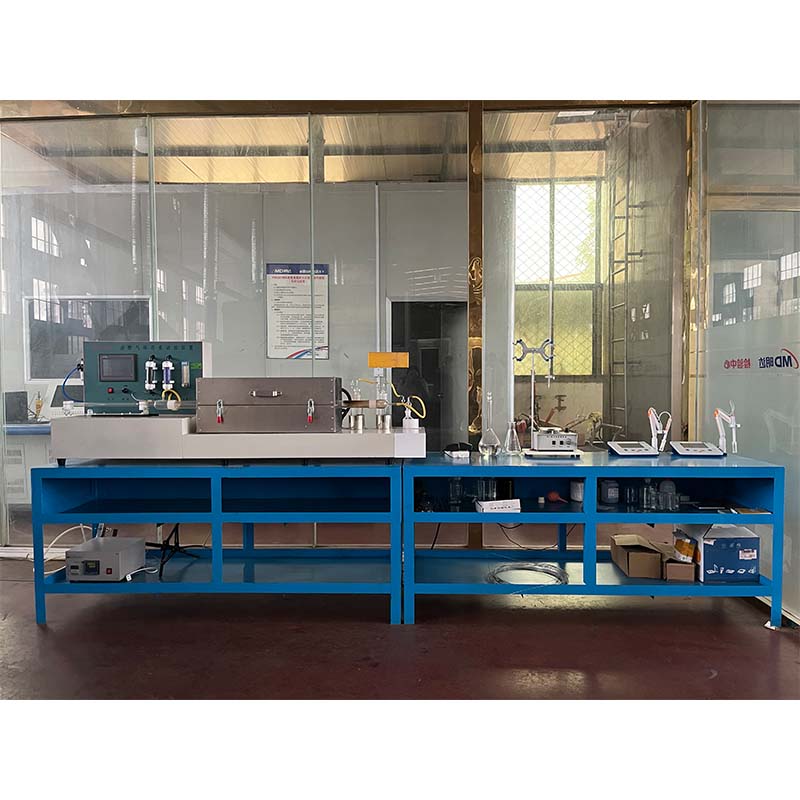
Figure 5: Schematic diagram of the FYLS-17650 system, illustrating gas flow and sensor placement.
Manufacturer Comparison and Customization Solutions
While several manufacturers offer halogen acid gas release determination devices, the choice often comes down to a balance of precision, automation, support, and the ability to offer tailored solutions. A direct comparison can highlight the unique selling propositions of different providers and underscore why the FYLS-17650 Halogen Acid Gas Release Determination Device stands out.
Comparative Analysis Considerations:
| Feature/Factor | FYLS-17650 Halogen Acid Gas Release Determination Device | Typical Competitor A | Typical Competitor B |
|---|---|---|---|
| Compliance Standards | IEC 60754-1/2, EN 50267-2-1/2, ASTM D5425 (Comprehensive) | IEC 60754-1/2 (Basic) | EN 50267-2-1/2 (European Focus) |
| Automation Level | Fully Automated (Temperature, Flow, Data Logging, Calculations) | Semi-Automated (Manual data input, less integrated control) | Automated (but limited customization options) |
| Conductivity Accuracy | ±0.5% F.S. (High Precision) | ±1.0% F.S. | ±0.8% F.S. |
| Temperature Uniformity | ±2°C (Excellent) | ±5°C | ±3°C |
| Software Interface | Intuitive, Comprehensive Data Analysis & Reporting | Basic, limited reporting features | Functional, but less user-friendly |
| Material Durability | High-purity Quartz, 316L SS, PTFE (Superior Corrosion Resistance) | Standard Borosilicate Glass, 304 SS (Moderate Resistance) | Similar to FYLS-17650, but potentially higher cost |
| After-Sales Support & Service | Extensive global network, remote diagnostics, calibration services, 3-year warranty (Standard) | Regional service centers, 1-year warranty | Limited global reach, 2-year warranty |
| Customization Potential | High (Custom software, specific test methods, integration) | Low (Standard configurations only) | Moderate (Limited hardware adjustments) |
| Typical Lifespan | 10+ years (with proper maintenance) | 7-8 years | 8-10 years |
This comparison highlights that the FYLS-17650 Halogen Acid Gas Release Determination Device often excels in areas critical for high-stakes industrial applications: precision, comprehensive compliance, and advanced automation. Moreover, our commitment to robust materials ensures long-term reliability and lower total cost of ownership.
Customization Solutions: Tailored to Your Needs
Recognizing that standard solutions may not always perfectly fit unique laboratory setups or specific research objectives, we offer comprehensive customization options for the FYLS-17650 Halogen Acid Gas Release Determination Device. Our team of expert engineers works closely with clients to understand their precise requirements, ensuring the device seamlessly integrates into existing workflows and addresses niche testing demands.
Customization possibilities include:
- Software Modifications: Tailored data reporting formats, integration with existing LIMS (Laboratory Information Management Systems), custom calculation algorithms for non-standardized tests, or specific user interface adjustments.
- Hardware Adaptations: Custom sample holders for unusual material geometries, specialized gas inlets/outlets for integration with external analytical instruments (e.g., FTIR, GC-MS for detailed gas analysis), or bespoke cooling systems for high-throughput applications.
- Extended Measurement Capabilities: While the core device measures conductivity and pH, integration of additional sensors for oxygen concentration, specific ion detection, or volatile organic compound (VOC) analysis can be explored for advanced research purposes.
- Compliance with Regional Standards: Though already broad, specific regional standards or company-internal protocols can be programmed and validated within the device's software.
- Turnkey Laboratory Solutions: Beyond the device itself, we can assist in designing the optimal laboratory setup, including fume hoods, gas cylinder management, and overall workflow optimization to maximize efficiency and safety.
This commitment to customization underscores our dedication to partnership and ensuring that clients derive maximum value from their investment in the FYLS-17650 Halogen Acid Gas Release Determination Device. Our deep expertise in material testing and instrument design allows us to offer solutions that truly meet the specific challenges of modern industry and research.
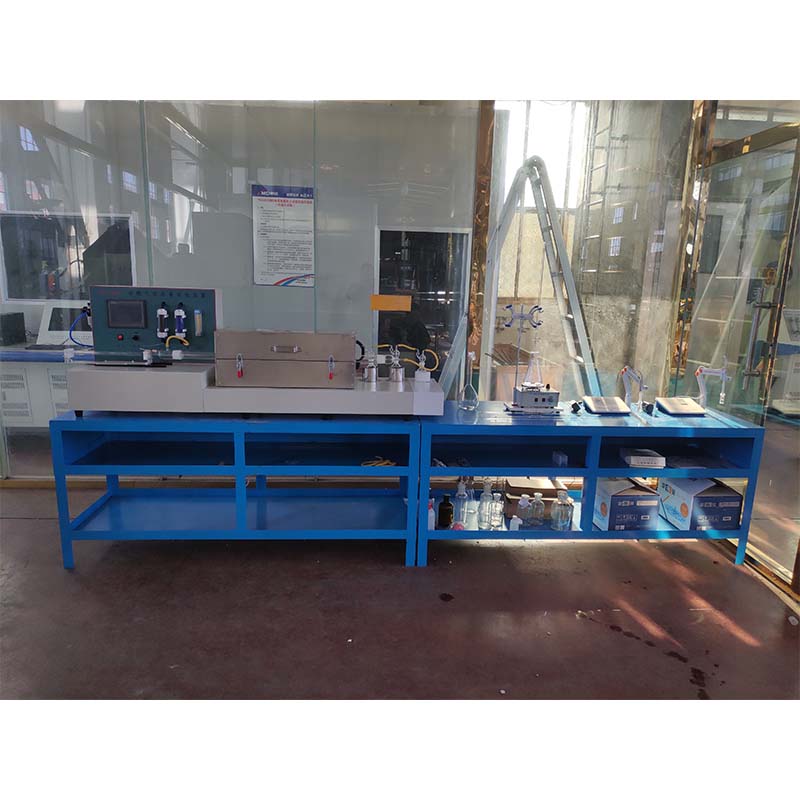
Figure 6: The FYLS-17650 in operation, demonstrating its compact and user-friendly design.
Application Cases and Client Success Stories
The real-world impact of the FYLS-17650 Halogen Acid Gas Release Determination Device is best illustrated through its successful application in various industries, helping clients achieve compliance, enhance product safety, and innovate. These cases highlight the device's reliability, accuracy, and the tangible benefits it delivers.
Case Study 1: Leading Wire & Cable Manufacturer Achieves LSZH Compliance
Client: Global Leader in Industrial Cables (Europe)
Challenge: Faced with increasingly strict Construction Products Regulation (CPR) requirements in the EU, the client needed to rigorously test their new line of LSZH (Low Smoke Zero Halogen) cables for corrosive gas release. Their existing testing equipment was outdated, lacked automation, and provided inconsistent results, leading to delays in product certification.
Solution: They implemented the FYLS-17650 Halogen Acid Gas Release Determination Device, drawn by its full automation and explicit compliance with IEC 60754-2 and EN 50267-2-2 standards. Our engineers provided comprehensive training and assisted in integrating the device into their existing quality control lab workflow. The device's robust design and 316L stainless steel components ensured durability against the corrosive test environment.
Results: Within three months, the client reported a 40% reduction in testing time per batch due to automation. The consistent and accurate results from the FYLS-17650 Halogen Acid Gas Release Determination Device significantly improved their confidence in product performance. They successfully achieved CPR certification for their entire LSZH cable range, opening new market opportunities and enhancing their reputation as a provider of safe, compliant products. "The precision and reliability of the FYLS-17650 have been a game-changer for our compliance efforts," commented their Head of R&D.
Case Study 2: Electronics Component Supplier Enhances Product Safety
Client: Major Asian Manufacturer of Consumer Electronics Components
Challenge: The client was developing new fire-resistant polymeric enclosures for their electronic devices, aiming to reduce hazardous substance release in case of internal short circuits or fires. They needed a precise method to quantify halogen acid gas release to meet evolving global environmental directives (e.g., RoHS, WEEE) and internal safety benchmarks, particularly regarding potential damage to sensitive internal circuitry from corrosive gases.
Solution: The FYLS-17650 Halogen Acid Gas Release Determination Device was chosen for its high sensitivity and comprehensive data logging capabilities. Its ability to accurately measure even trace amounts of halogen acids proved crucial for their R&D work on new material formulations. The integrated software allowed for easy comparison of different material batches.
Results: The client was able to iterate faster on their material development, reducing the halogen content in their new enclosures by an average of 60% compared to previous generations, significantly lowering the risk of corrosive damage and environmental impact. The FYLS-17650 Halogen Acid Gas Release Determination Device became central to their product safety validation process, helping them secure lucrative contracts with major global electronics brands. "The FYLS-17650 has allowed us to take our product safety to the next level," stated their Chief Materials Scientist.
Case Study 3: Independent Testing Laboratory Expands Service Offerings
Client: Accredited Third-Party Testing Laboratory (North America)
Challenge: As demand for material environmental and fire safety testing grew, the lab needed to expand its capacity and capabilities for halogen acid gas release determination. They required a device that was highly reliable, compliant with all relevant international standards (including ASTM D5425), and offered robust data integrity for audit purposes, essential for their ISO/IEC 17025 accreditation.
Solution: The lab invested in multiple FYLS-17650 Halogen Acid Gas Release Determination Device units. They particularly valued the device's adherence to a wide range of standards and its comprehensive calibration and service support package, which aligns with their accreditation requirements. The ease of calibration and consistent performance minimized downtime.
Results: The laboratory successfully expanded its service portfolio, attracting new clients from the aerospace, automotive, and construction sectors. The high throughput enabled by the automated systems allowed them to handle a larger volume of samples with increased efficiency and maintained data quality. Their reports, generated directly from the device's software, were consistently accepted by regulatory bodies and clients worldwide. "The FYLS-17650 is a cornerstone of our fire safety testing division," commented the Laboratory Manager, "its reliability is unmatched."
These examples demonstrate the critical role of the FYLS-17650 Halogen Acid Gas Release Determination Device in driving product innovation, ensuring regulatory compliance, and enhancing overall safety across diverse industries. Our long history of service and partnerships with leading companies underscores our authority in this specialized field.
Professional FAQ: Your Questions About the FYLS-17650 Halogen Acid Gas Release Determination Device Answered
Here are answers to some common technical questions regarding the FYLS-17650 Halogen Acid Gas Release Determination Device, its operation, and maintenance, enhancing trustworthiness and addressing common concerns.
Q1: What types of materials can be tested with the FYLS-17650 Halogen Acid Gas Release Determination Device?
A1: The FYLS-17650 Halogen Acid Gas Release Determination Device is primarily designed for testing polymeric materials that may contain halogenated compounds. This includes, but is not limited to, insulation and sheathing materials for electrical cables, plastic components used in electronics and appliances, construction materials (e.g., PVC pipes, foam insulation), and automotive interior materials. The sample size is typically up to 1000 mg, as specified by standards like IEC 60754-2.
Q2: How does the device ensure the accuracy of its conductivity and pH measurements?
A2: Accuracy is ensured through several mechanisms. The device uses high-precision conductivity and pH sensors, which are factory-calibrated and can be re-calibrated by the user using certified reference solutions (e.g., NIST-traceable pH buffers, conductivity standards). Furthermore, the sealed gas absorption system prevents ambient contamination, and the controlled temperature environment minimizes measurement drift. Regular maintenance and calibration, as per our guidelines, are crucial for maintaining long-term accuracy, adhering to ISO/IEC 17025 laboratory quality standards.
Q3: What are the primary safety features integrated into the FYLS-17650 Halogen Acid Gas Release Determination Device?
A3: Safety is paramount. The device includes an automatic over-temperature cut-off for the furnace, preventing overheating. An interlock mechanism prevents the furnace door from opening during high-temperature operation. The system includes integrated exhaust ports for connection to a laboratory fume hood, ensuring safe evacuation of combustion gases. Additionally, all electrical components comply with international safety standards, and the robust enclosure prevents exposure to internal high-voltage parts.
Q4: What are the typical consumables required for operation, and what is their lifespan?
A4: Key consumables include the quartz combustion tube (lifespan depends on usage and material tested, typically 6-12 months for heavy use), deionized water for the absorption bottles, and standard calibration solutions for pH and conductivity electrodes (shelf life usually 12-24 months). Regular replacement of pump tubing and cleaning of absorption bottles are also part of routine maintenance. We provide a comprehensive list of recommended spare parts and consumables with the device.
Q5: How does the FYLS-17650 Halogen Acid Gas Release Determination Device handle data logging and report generation?
A5: The device features integrated PC-based software that automatically logs real-time conductivity and pH data throughout the test. Post-test, it performs calculations according to the selected standard (e.g., IEC 60754-2 for pH and conductivity change, expressed as HCl equivalent). The software then generates comprehensive test reports, including raw data, graphical representations, and final results, which can be exported in various formats (PDF, CSV) for easy archiving and sharing. This streamlines compliance documentation.
Q6: What is the typical delivery and installation process, and what kind of warranty and support are offered?
A6: Delivery typically takes 4-6 weeks after order confirmation, depending on customization. Installation is straightforward, often requiring only power and a connection to a suitable fume exhaust system. We offer remote installation guidance, and on-site installation and training by a certified engineer can be arranged upon request. The FYLS-17650 Halogen Acid Gas Release Determination Device comes with a standard 3-year warranty covering manufacturing defects. Post-warranty, comprehensive service contracts, remote technical support, and annual calibration services are available to ensure continuous optimal performance and a long product lifespan.
Q7: Can the FYLS-17650 Halogen Acid Gas Release Determination Device be integrated into an existing laboratory automation system or LIMS?
A7: Yes, the FYLS-17650 Halogen Acid Gas Release Determination Device's software is designed with connectivity in mind. It typically supports data export in CSV or XML formats, facilitating integration with most Laboratory Information Management Systems (LIMS). For more advanced automation or specific API integrations, our technical team can provide custom software development services or guidance on how to interface the device with external automation platforms, enhancing laboratory efficiency and data traceability.
Conclusion: A Cornerstone for Material Safety and Environmental Compliance
The imperative for materials to demonstrate minimal environmental impact and enhanced fire safety performance continues to drive innovation in testing methodologies and equipment. The FYLS-17650 Halogen Acid Gas Release Determination Device represents the zenith of this evolution, offering an unparalleled combination of precision, automation, and compliance with the most rigorous international standards. Its robust design, utilization of corrosion-resistant materials, and sophisticated software package make it an indispensable tool for quality control, research, and regulatory adherence across diverse sectors, from the critical wire and cable industry to advanced electronics and construction.
As industries increasingly pivot towards sustainable and safer materials, the role of accurate and reliable testing becomes even more critical. The FYLS-17650 Halogen Acid Gas Release Determination Device not only facilitates compliance with present regulations but also equips manufacturers and researchers to anticipate future demands for halogen-free and environmentally benign products. Investing in such advanced instrumentation is not just about meeting a standard; it's about safeguarding public health, protecting valuable infrastructure from corrosive byproducts, and contributing to a more sustainable future.
Our commitment to excellence extends beyond manufacturing. We provide comprehensive support, from initial consultation and customized solutions to installation, training, and long-term service, ensuring that our clients maximize the value and lifespan of their investment. The proven track record of the FYLS-17650 Halogen Acid Gas Release Determination Device in leading laboratories and manufacturing facilities globally affirms its position as a trusted and authoritative solution in material characterization.
References:
- IEC 60754-2. (2014). Test on gases evolved during combustion of materials from cables – Part 2: Determination of acidity (by pH measurement) and conductivity. International Electrotechnical Commission.
- ASTM D5425-22. (2022). Standard Test Method for Determination of Cable Insulation and Jacket Compounds' Corrosivity and Acid Gas Generation by Combustion. ASTM International.
- Xu, Z., Lu, H., Huang, R., & Wang, Q. (2020). Research progress of halogen-free flame retardants in wire and cable materials. Journal of Fire Sciences, 38(1), 3-25. https://journals.sagepub.com/doi/abs/10.1177/1742715919888995
- "The importance of testing for halogen-free cables." (2023). Nexans Expert Insights. https://www.nexans.com/en/market/Building-and-cities/expert-insights/The-importance-of-testing-for-halogen-free-cables.html
-
The Role of Tensile Force Testers in Quality Control and Material Science
NewsAug.01,2025
-
Maintenance and Safety Tips for Aging Ovens
NewsAug.01,2025
-
Density Balance in Forensic Science
NewsAug.01,2025
-
Advanced Optical Measurement Technologies
NewsAug.01,2025
-
A Buyer’s Guide to Tensile Test Machines
NewsAug.01,2025
-
Why the Conductor Resistance Constant Temperature Measurement Machine Redefines Precision
NewsJun.20,2025
 Copyright © 2025 Hebei Fangyuan Instrument & Equipment Co.,Ltd. All Rights Reserved. Sitemap | Privacy Policy
Copyright © 2025 Hebei Fangyuan Instrument & Equipment Co.,Ltd. All Rights Reserved. Sitemap | Privacy Policy
